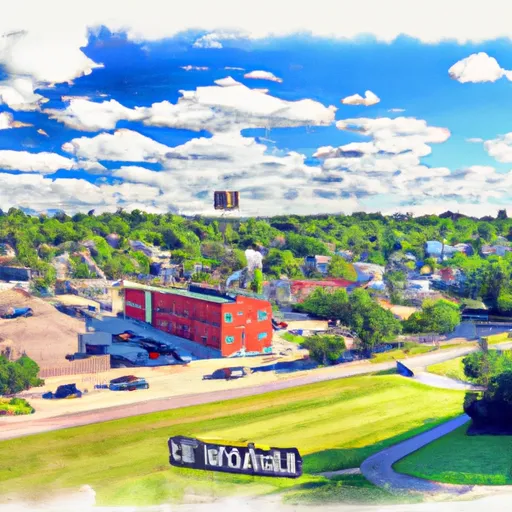-
 Snoflo Premium
Snoflo Premium
Get unlimited access to all our content
With no Ad interruptions! - Start Your Free Trial Login with existing account
Strandquist
Eden Index
Climate
4.5
•
Recreation
2.3
•
Community
•
Safeguard
2.6/10

Strandquist is a small town located in Marshall County, Minnesota. The town has a relatively cold climate due to its northern location. Winters are long and harsh, with temperatures often dropping well below freezing and significant snowfall. Summers, on the other hand, are short and mild, with average temperatures ranging from 60 to 80 degrees Fahrenheit.
When it comes to hydrology constituents, Strandquist is situated near the Middle River, which flows through the town. The river provides opportunities for fishing, including species such as northern pike, walleye, and smallmouth bass. Additionally, the area is surrounded by numerous lakes and ponds, offering opportunities for boating, swimming, and other water-based recreational activities.
Outdoor enthusiasts visiting Strandquist can explore the nearby nature areas and forests, which provide excellent opportunities for hiking, camping, birdwatching, and wildlife photography. The region is rich in natural beauty, with lush forests, rolling hills, and abundant wildlife.
In conclusion, Strandquist, Minnesota, offers a cold climate with long winters and mild summers. The town is situated near the Middle River, providing fishing opportunities, and is surrounded by lakes and forests, offering various outdoor recreation possibilities.
What is the Eden Index?
The Snoflo Eden Index serves as a comprehensive rating system for regions, evaluating their desirability through a holistic assessment of climate health, outdoor recreation opportunities, and natural disaster risk, acknowledging the profound impact of these factors on livability and well-being.
Climate Health Indicator (CHI): 4.5
Strandquist receives approximately
528mm of rain per year,
with humidity levels near 83%
and air temperatures averaging around
4°C.
Strandquist has a plant hardyness factor of
3, meaning
plants and agriculture in this region thrive during a short period during spring and early summer. Most
plants will die off during the colder winter months.
By considering the ideal temperature range, reliable water supplies, clean air, and stable seasonal rain or snowpacks, the Climate Health Indicator (CHI) underscores the significance of a healthy climate as the foundation for quality living.
A healthy climate is paramount for ensuring a high quality of life and livability in a region, fostering both physical well-being and environmental harmony. This can be characterized by ideal temperatures, reliable access to water supplies, clean air, and consistent seasonal rain or snowpacks.
Weather Forecast
Streamflow Conditions
Lower Red
Area Rivers
Lower Red
Snowpack Depths
Lower Red
Reservoir Storage Capacity
Lower Red
Groundwater Levels
Recreational Opportunity Index (ROI): 2.3
The Recreational Opportunity Index (ROI) recognizes the value of outdoor recreational options, such as parks, hiking trails, camping sites, and fishing spots, while acknowledging that climate plays a pivotal role in ensuring the comfort and consistency of these experiences.
Access to outdoor recreational opportunities, encompassing activities such as parks, hiking, camping, and fishing, is crucial for overall well-being, and the climate plays a pivotal role in enabling and enhancing these experiences, ensuring that individuals can engage in nature-based activities comfortably and consistently.
Camping Areas
| Campground | Campsites | Reservations | Toilets | Showers | Elevation |
|---|---|---|---|---|---|
| Wagner Park | 78 | 1,033 ft | |||
| Lake Bronson State Park | 200 | 979 ft | |||
| Buffalo River State Park | 45 | 978 ft | |||
| Bosworth City Park | None | 899 ft | |||
| Halma City Park | None | 995 ft | |||
| Pelan Pioneer Park | None | 1,049 ft | |||
| Karlstad Moose Park | 12 | 1,038 ft | |||
| Marshall County Park at Florian | 104 | 930 ft |
Catastrophe Safeguard Index (CSI):
The Catastrophe Safeguard Index (CSI) recognizes that natural disaster risk, encompassing floods, fires, hurricanes, and tornadoes, can drastically affect safety and the overall appeal of an area.
The level of natural disaster risk in a region significantly affects safety and the overall livability, with climate change amplifying these risks by potentially increasing the frequency and intensity of events like floods, fires, hurricanes, and tornadoes, thereby posing substantial challenges to community resilience and well-being.
Community Resilience Indicator (CRI):
The Community Resilience Indicator (CRI) recognizes that education, healthcare, and socioeconomics are crucial to the well-being of a region. The CRI acknowledges the profound impact of these elements on residents' overall quality of life. By evaluating educational resources, healthcare accessibility, and economic inclusivity, the index captures the essential aspects that contribute to a thriving community, fostering resident satisfaction, equity, and social cohesion.

